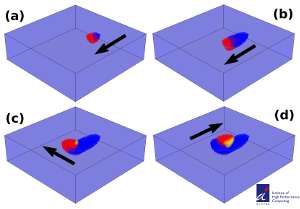The economic impact of additive manufacturing

Remember the last time you went shopping and were looking in vain for shoes a half-size larger? Soon, 3D printing could help you find that perfect fit.
Also known as Additive Manufacturing, 3D printing is a new technology that creates an object by literally 'adding' material one piece at a time, until the final shape and size of the object—in this case, your comfortable shoes—is reached.
3D printing works in a layer-by-layer fashion: metal or plastic powder is spread across one very thin layer (a few micrometers thick); then, a laser beam scans a slice of the object to be built. As the powder locally melts and binds together, a new layer of the object is built, melting the powder. A new layer of powder is then deposited on top of the structure, and the laser scan is repeated for a new slice—et voilá, the object gradually takes shape layer by layer.
Other than custom-size clothing, the possibilities for 3D printing are enormous: if you replace the plastic powder with metal powder, for example, the rich variety of complex objects typical in today's advanced engineering applications can be built. Here, there are many key advantages in using 3D printing rather than conventional manufacturing. For example, hollow shapes, that can't be built with conventional manufacturing, can be made in one single step of casting.
At IHPC, we became interested in Additive Manufacturing as there are a lot of exciting problems that are still waiting to be solved. For example, understanding how the many process parameters—the power of the laser and its scanning speed for example—influence the final quality of the part. For this reason, we are developing new capabilities that allow us to simulate the additive manufacturing process, and predict the final properties of the part, such as its strength and durability. This way, we also aim to support local companies, because if you don't need to print many parts just to test them, and instead focus only on printing your best part, well, that is a big saving in terms of both money and time!
The economic impact of additive manufacturing could be quite significant. For example, as mentioned, people are developing ways to allow you to 'on-demand' print your next dress, or pair of shoes tailored just right for you. The next gold jewel for your loved one? You can now print it in the shape you want; the more intricate the design, the better. At the same time, exotic applications are also being studied. For example, people are trying to 3D print organs (e.g. livers and kidneys) for the benefit of millions of patients waiting for organ transplants, while other people are trying to 3D print chocolates, simply to delight everybody.
3D printing could also be one of our best allies up in space. What happens if your old tools break or you need a new custom-designed tool? On Earth, this is annoying – but in space, this is a big problem. In August 2014, a 3D printer was dispatched to the International Space Station. By sending up the printer, rather than the tool, astronauts can now on-demand print a screwdriver when they need it. Indeed, this could be a huge help for the future missions to Mars and beyond, where if you need something that you didn't carry with you, there certainly isn't the option of going back to pick it up!



















